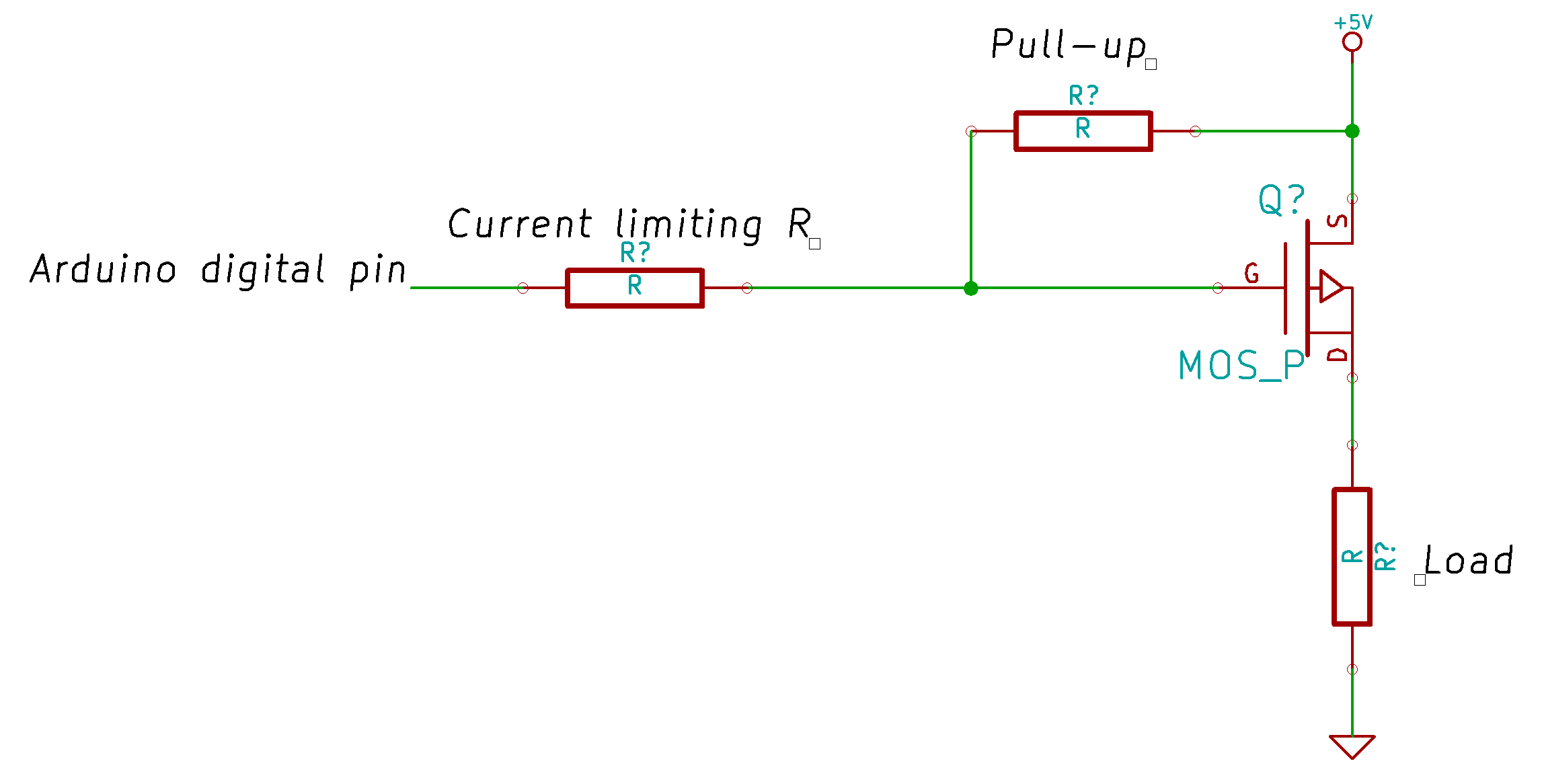How a P-MOSFET works is clear, there is plenty of documentation on the web. But what's the standard circuit to use them as an ideal switch with an MCU is not that clear, in my opinion.
I saw there are a lot of circuits that use an upstream NPN transistor or a N-MOSFET to control a P-MOSFET's Gate. And how they work is very clear. However, every circuit of these have to switch a voltage higher than MCU's voltage.
Given this circuit:
It doesn't seem to me that this could work without an upstream component that will connect to GND the Gate, given that the Arduino's digital pin isn't an open-drain INPUT, but works like an OUT. In other words, voltage or no voltage. These are my considerations about this circuit, please help me and everyone to understand answering these points:
- The pull-up resistor function is to define the default state of the P-MOS Gate. The pull-up takes the Gate to +5V, in this case. So default state = OFF
- When the Arduino digital pin is +5V, the Gate still stays at +5V.
- When the Arduino digital pin is 0V, the Gate still will be +5V, given that the Arduino's pin isn't an open-drain pin. In other words, that pin doesn't connect to GND, letting the current flow and to take the pin to the 0 digital status.
Am I wrong?


